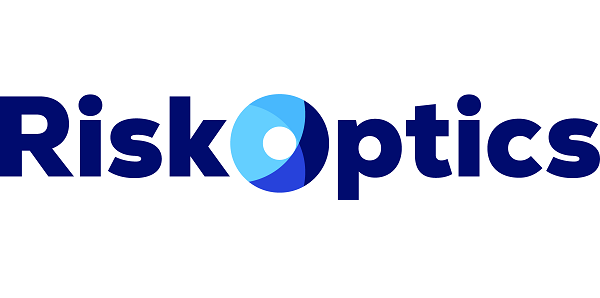How Can You Protect Your Company From Hackers?
According to a Clark School Study at the University of Maryland, there is a cyber-attack every 39 seconds on average. If you are running a small business, you have more reason for concern as further studies reveal that 43 percent of hacker attacks target small businesses. With such alarming cybersecurity stats, it is vital for you to learn how you can protect your company from bad-actors.
Types of Cyber Attacks your Company may Be Vulnerable To
- Malware Attack
This is the most common type of cyber-attack that most companies are vulnerable to. A malicious attack is a type of cyber-attack where malicious software is installed in your system and replicates itself across the network. The typical examples of malware include:
- Ransomware: This is a type of malware used by hackers to block access to the company’s data. Once the attack is launched, hackers usually threaten to delete or publish the data unless a ransom is paid.
- Macro viruses: These are types of computer viruses that attach to an application’s initialization sequence. They infect applications such as Microsoft Excel and Word.
- File infectors: These are viruses that generally attach themselves to executable code (i.e., .exe files).
- System infectors: Also referred to as boot-record infectors, system infectors are viruses that attach to the master boot record on the hard disk.
- Trojans: They hide in a useful program and help attackers to launch attacks on a system. Unlike viruses, Trojans do not self-replicate.
- Worms: They are self-contained programs that spread across computers and networks; which are usually spread through email attachments and can conduct malicious activities once the attachments containing them are opened.
- Denial of Service (DoS) Attack
DoS attacks are designed to overwhelm a system’s resources to prevent it from responding to service requests. Hackers can launch a DoS attack to take the system offline so that they can begin another kind of attack.
- Phishing Attack
A phishing attack is a type of cyber-attack that combines technical trickery and social engineering. This is a tactic used by hackers, whereby they send emails that seem to come from trusted sources with the aim of influencing users to do something or to gain personal information. The emails can come with attachments or links that when clicked load malware onto your PC.
- Drive-by Attacks
These are types of attacks, whereby hackers look for insecure sites and plant a malicious script into PHP or JS code on one of the web pages. This malicious script might install malware directly onto the PC of the user that visits the website. The script might also re-direct the user to a site that the hacker controls.
- SQL Injection Attack
These are types of cyber-attacks that largely affect database-driven websites. A successful SQL injection attack can access sensitive company data from the database, make changes to database data, carry out administration operations on the database, and issue commands to the OS.
- Eavesdropping Attack
These are kinds of attacks that occur when hackers intercept a company’s network traffic. By ‘eavesdropping,’ hackers can get a hold of credit card numbers, passwords, and other sensitive data that a user may be sending over the network.
How you can Mitigate Cyber Attacks
If you have not secured your system just yet, being attacked by hackers is a matter of when not if. Luckily, there are various ways in which you can prevent your company from becoming a hackers’ playground. They include:
- Adopt cybersecurity frameworks
A cybersecurity framework is essentially a proven approach to developing the procedures and policies necessary to secure the availability, integrity, and confidentiality of databases and information systems. The most frequently adopted cybersecurity frameworks include PCI DSS, ISO 270001/27002, NIST, and CIS. Adopting these frameworks will not only help your company fulfill its cybersecurity obligations, but it will also enable you to build a robust cybersecurity management system.
- Install anti-virus and anti-malware programs
The importance of installing professional anti-virus and anti-malicious software cannot be emphasized enough. Adding this layer of protection on your computers and mobile devices and keeping the software up to date can help ensure that viruses, Trojans, malware, and different kinds of attacks are prevented.
- Develop strong security policies and protocols
It is essential that you write out a formal company internet policy that outlines both acceptable and prohibited online activities for employees. One of the rules outlined in your policy should warn employees against opening email attachments or clicking on suspect links that are not business-related. Employees should also be advised against connecting their personal devices to the company’s wireless network.
- Educate employees about cybersecurity regularly
Whether or not your business has an IT department, it is crucial to bring all employees up to speed with issues concerning cybersecurity. Be sure to educate your employees about how viruses and malware transmit and travel, as well as the steps they should take in the event they notice a problem. Since hackers are learning new tricks every day, it is vital that you educate employees regularly to give them a heads up.
Understanding the cyber threats and the cybersecurity solutions available is critical for every business across all industries. By integrating cybersecurity frameworks and offering advanced cyber training for all departments and performing a proper risk assessment, you will increase your chances of winning the war against cybercriminals and mitigating their impact on your business.
Author Bio
Ken Lynch is an enterprise software startup veteran, who has always been fascinated about what drives workers to work and how to make work more engaging. Ken founded Reciprocity to pursue just that. He has propelled Reciprocity’s success with this mission-based goal of engaging employees with the governance, risk, and compliance goals of their company in order to create more socially minded corporate citizens. Ken earned his BS in Computer Science and Electrical Engineering from MIT.

